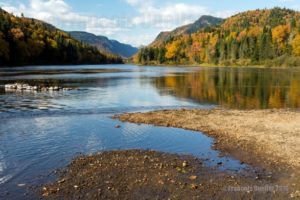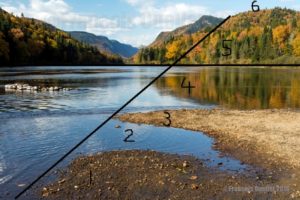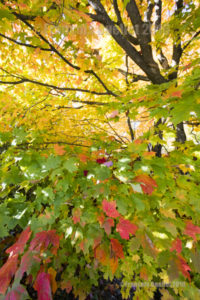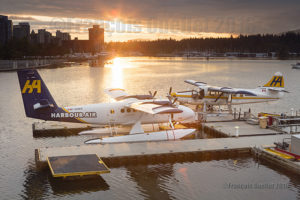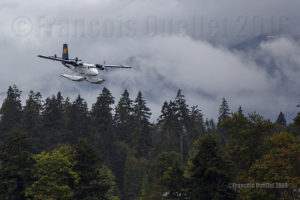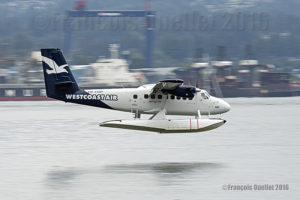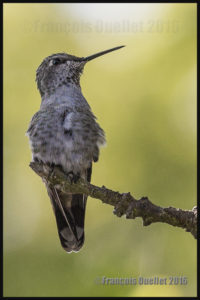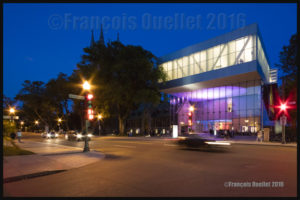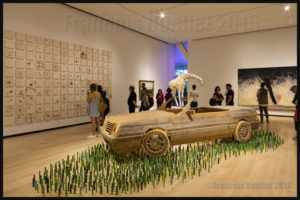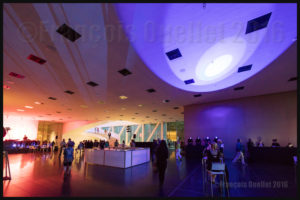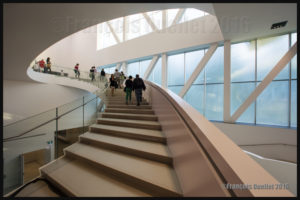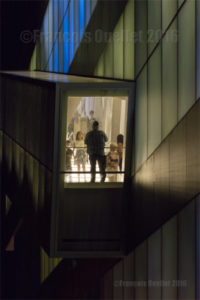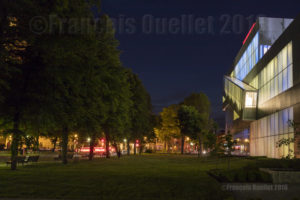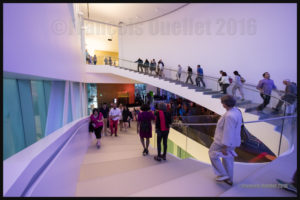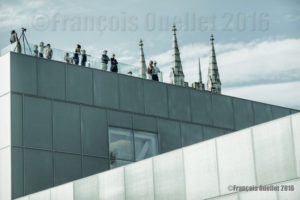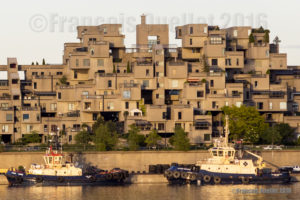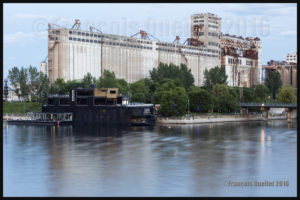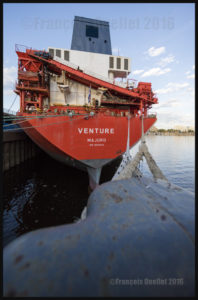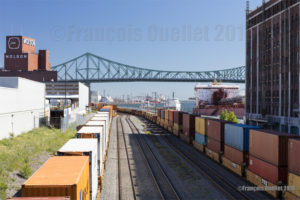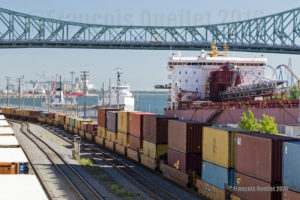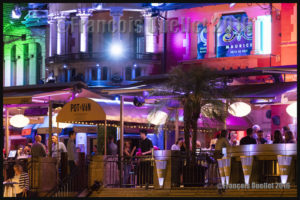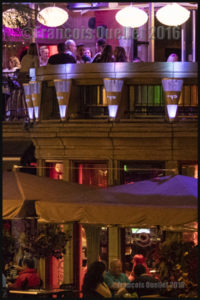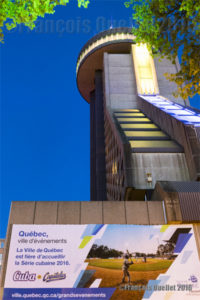The Queen Mary 2 comes twice a year in the Quebec Harbour during the autumn. It obviously always attracts a lot of onlookers. The vessel carries 2620 passengers who are prompt to visit Old Quebec upon arrival.
In order to take a picture of this superb ship and the architecture of Old Quebec’s houses, it was worth waiting until evening, when the colours were more subtle. I could have chosen to do a close-up of the Queen Mary 2, but by doing so the photo would have lost some of its dynamism since the quartier Petit-Champlain’s alleys and its pedestrians would have been absent from the scene.
There is only a small portion of the sky visible in the picture and this is voluntarily since it does not present any interesting details, especially when compared with the rest of the scenery. The front of the Queen Mary 2 has wilfully been located in the superior right corner of the photo since it is toward this part of the image that the eye ends its initial inspection.
There were quite a number of viewers installed on the Dufferin Terrace, most with a portable camera, trying to capture the scene. All those onlookers and photographers constantly moving on the wooden terrace were nevertheless creating vibrations: a tripod, usually the perfect tool to prevent any shaking of the camera, was only useful here providing that there was a shorter exposure time. The ISO had to be increased accordingly to respect the shorter exposure and avoid a blurred picture at low speed.
Still, the photo taken with a Canon 5DSR full-frame camera successfully portrays the mood in Old Quebec on that evening of autumn 2016.
For other ship photos posted on my website, click on the following link:
For other photos on the province of Quebec and also Quebec City, click on the following links from my blog:

